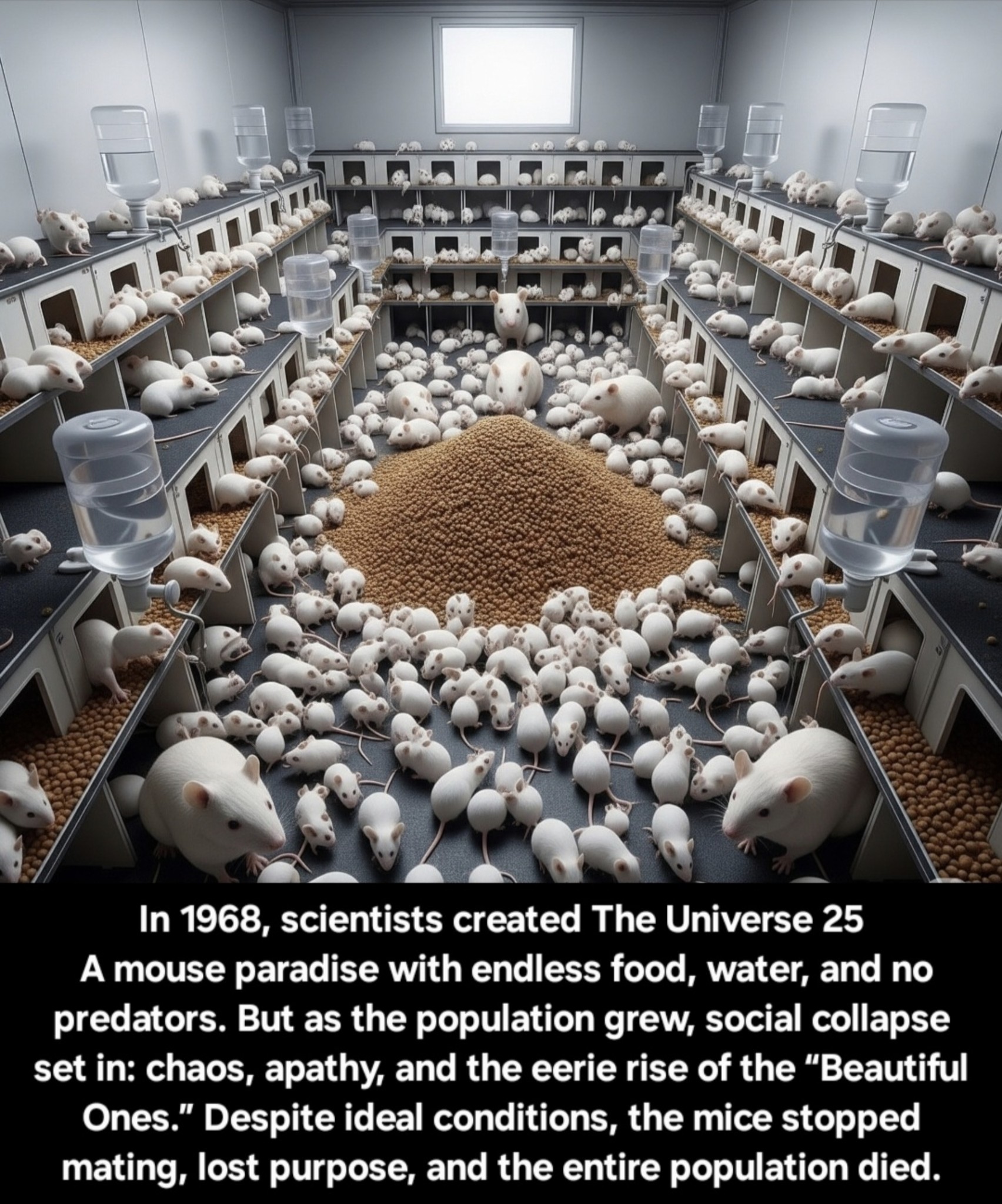The Universe 25 experiment
As the number of mice grew, signs of social stress and breakdown began to emerge. Hierarchies formed, leading to extreme aggression among dominant males, while weaker males withdrew. Females became overly aggressive or neglectful, often abandoning or killing their young. Some mice—whom Calhoun dubbed "the Beautiful Ones"—completely isolated themselves. These mice did not mate, did not fight, and spent their time grooming and eating alone. Despite the abundance of resources, the colony's social structure collapsed.
Eventually, reproduction ceased entirely. The once-thriving mouse society declined into chaos and ultimately died out. Calhoun called this a "behavioral sink," describing how overpopulation and lack of social purpose could lead to psychological and societal collapse. Though the experiment involved mice, Calhoun viewed it as a potential warning for human civilization: that without meaningful roles, social connection, and limits to growth, even the most abundant environments could result in self-destruction.

Comments